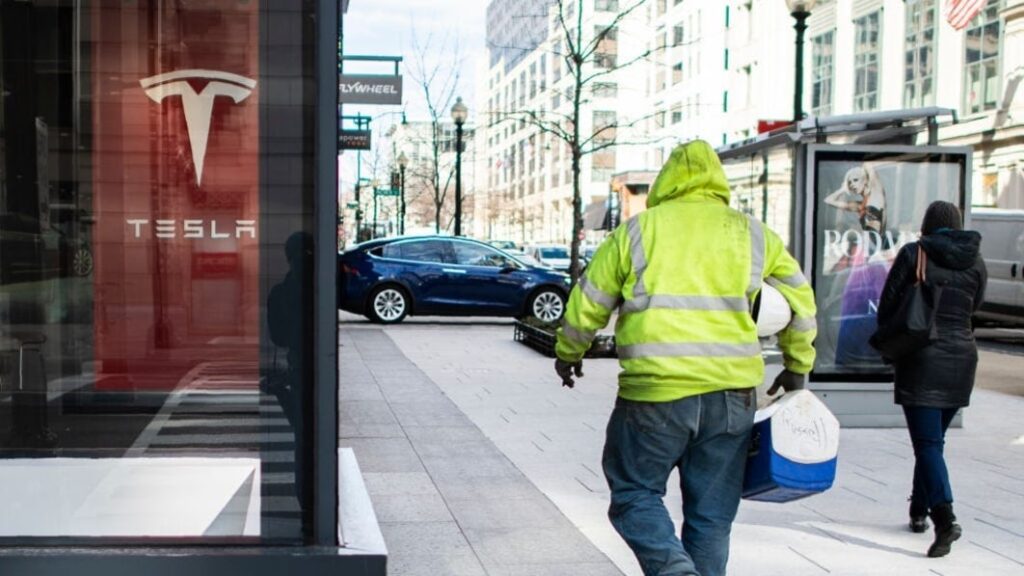Women are more skeptical of electric cars than men — and won't accept less than a 350-mile range

Early EV adopters want the newest tech in an
electric car. That’s not so true for the next waves of buyers.
Getty Images
Men make up most early adopters of electric cars, while women account for most EV skeptics.
Higher-income consumers are more likely to adopt or consider going electric.
Those skeptical about EVs aren’t willing to accept a range lower than 353 miles.
If automakers want to make their multi-billion-dollar electric car ambitions happen, they need to know who their target customers are and what buyers are looking for in an EV.
Notably, well-off millennial men have largely been leading the charge on EV purchases.
But on a more granular level, U.S. consumers fall into three camps as it relates to electric cars, according to consultancy Berylls and data from market researcher Ipsos: Early adopters, considerers, and skeptics.
Here is who they are and what they’re looking for.
Early adopters
Socio-demographics
Details
Mean age
42 years
Gender
31% female
Have children
69%
Mean income
$112,690
Live in major cities
64%
Minimum accepted range
247 miles
Source: Ipsos 2022 Mobility Navigator Module 1, Berylls
“On the early adopter side, we’re looking at a much younger and male-focused population versus the EV skeptics that are a little bit older, tend to skew more towards female,” Cameron Gormley, senior consultant at Berylls, told Insider.
These buyers are also generally less financially-motivated. The adopters’ top three prioritized vehicle features include addressing concerns about CO2 emissions and air pollution, vehicles that are unique, and a vehicle that keeps its value. They’re also the most flexible of buyers regarding the range they’re looking for in an EV.
“This customer group is more so interested in a futuristic looking vehicle, something that’s unique that might separate from them from the crowd, that might have all the digital system features,” Gormley said.
Buyers considering EVs
Socio-demographics
Details
Mean age
45 years
Gender
47% female
Have children
68%
Mean income
$106,910
Live in major cities
49%
Minimum accepted range
244 miles
The considerers’ top features include the best of both worlds, and consider both cost and lifestyle factors: They want a vehicle that keeps its value, a vehicle with good fuel economy, and a vehicle that is fun to drive.
“The considerers and the skeptics, they’re more so interested in your traditional vehicles, not necessarily some of the high-tech features,” Gormley said. Given that, “I think we’ll potentially start to see a shift in terms of what the range of features within electric vehicles is.”
Car shoppers skeptical about EVs
Socio-demographics
Details
Mean age
57 years
Gender
61% female
Have children
27%
Mean income
$86,890
Live in major cities
11%
Minimum accepted range
353 miles
The skeptics’ top features are primarily financially driven: They want a vehicle with good fuel economy, a vehicle that keeps its value, and a vehicle with a low total cost of ownership.
Actual driving habits and perceptions of what an EV can provide don’t seem to align.
“Those who are in the skeptic camp said that they wanted a higher range, however, actually drove the least amount on average per year,” Gormley said. “Part of that might be a lack of education in terms of what they think an EV can provide for them in terms of range.”
The
2023 Kia Niro EV.
Kia
What types of electric cars EV shoppers want overall
“If we look at the F-150 being the most-selling vehicle, you would expect to see pickup trucks dominating the market,” Berylls associate partner Henning Ludes said. “But actually from our own analysis, SUVs will be the key electrification driver.”
The firm expects SUVs to make up 60% of US EV sales in 2030, pickups to account for 15%, and other vehicles to make up 25%.



